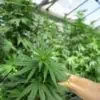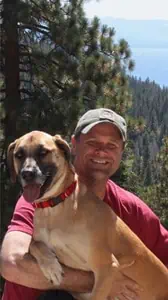TABLE OF CONTENTS
Cannabis edibles have become increasingly popular as more people accept the benefits offered by THC, CBD, and other cannabinoids. Dosage rules are important to follow to avoid any potential issues.
Edibles come in various shapes, colors, sizes, and types including baked goods, savory treats, beverages, mints, gummies, oils and butters, and many more edible options.
Marijuana’s legality in many states makes it easier for cannabis product providers to make edibles and sell them. Some people don’t like to smoke or can’t because of medical reasons, making cannabis edibles an ideal option.
While it may be easy to eat cannabis, there are many considerations to keep in mind to have a safe and fun experience.
Before you ingest edibles, read the label so you know the total dosage.
The creators of cannabis-infused edibles have to account for dosage in order to remain compliant with state rules and regulations, and you do as well for safe consumption.
Ingestion of Cannabis Edibles
When consuming cannabis edibles, it's important to be patient as the onset of THC or other cannabinoids' effects may require waiting for an hour or two, or even longer.
The timing can vary depending on factors like your cannabis consumption frequency, the quantity ingested, your body weight, and the THC concentration in the edibles.
The peak of the effects can come between the 2- and 4-hour mark after consumption. The effects can subside after 6 to 10 hours.
Novice marijuana users sometimes become impatient while waiting for the high to take effect, only to eat more edibles and then discover the paranoia and other adverse effects are too much to handle.
In some smoking circles, this is called “greening out.” You don’t want to go there. If you do happen to over consume cannabis edibles, there are plenty of ways to reduce the negative effects.
When you consume a cannabis edible, it undergoes digestion and metabolization in the liver. During this process, THC is transformed into its more potent and longer-lasting metabolite known as 11-hydroxy-THC
When taken sublingually (under the tongue), edibles like tinctures and oils are instantly absorbed through the membranes into the bloodstream.
Sublingual products can take effect in as little as 30 seconds to 5 minutes. Its effects can last up to 3 hours.
Nanoemulsions such as oils and isolates also produce fast-acting effects since they are able to be absorbed into the bloodstream through the mouth, throat, esophagus, and stomach lining instead of being metabolized in the liver. Nanoemulsions can take effect in 10 to 15 minutes.
Let’s look at how the dosage rules for edibles can make a difference in your experience.
What Impacts the Cannabis Edibles High

Metabolism
There are various things that contribute to how people react to cannabis edibles. Metabolism is one thing that plays an integral role.
For example, someone with a faster metabolism may feel the effects of THC in cannabis edibles much faster than the average person.
Empty vs. Full Stomach
Another thing that impacts an edible’s high is whether you’ve eaten or not before ingesting an infused edible.
We don’t recommend ingesting cannabis edibles on an empty stomach, especially for first-time users, due to the intense and unpredictable effects.
You don’t need to eat a huge meal, per se, but you should have some food in your stomach, even if you have to munch on something.
Cannabinoid Content
The type and amount of cannabinoid in the edible also affect how you experience the effects. For example, an edible with a high dose of THC produces the intoxication characterized by euphoria, relaxation, focus, creativity, and pain relief.
However, some users may be more prone to its side effects, which include change in time perception, impaired coordination, increased anxiety, short term memory loss, and fast heart rate.
If you don't want to experience the intoxication of THC, you can go with an edible that has primarily CBD. CBD does not have any intoxicating effects. Instead, the cannabinoid produces relaxing and clear-headed effects.
In fact, CBD is preferred by users with anxiety due to its stress-relieving properties and minimal side effects.
Homemade vs. Prepackaged Edibles
Homemade and pre-packaged edibles can produce different experiences depending on how they were made.
Making cannabis edibles at home may not yield as precise results as edibles made using commercial machinery and procedures. Edibles manufacturers must create edibles that contain a specified range of cannabinoids to remain state-compliant
First, determining the potency per serving is difficult to do when making edibles at home. Primarily, distributing the cannabis oil or butter evenly across the edible is important. Stirring the cannabis thoroughly into the mixed ingredients ensures proper homogenization.
Ultimately, the effects of homemade edibles tend to be a bit more unpredictable than edibles from a licensed dispensary.
10 mg Dosage Rule
There’s an old saying among experienced cannabis users: You can always eat more, you can never eat less.
Make sure you use marijuana strains with lower THC levels if you’re a first-time or low-tolerance user. It’s best to start with 2.5 to 5 mg (or less) instead of a 10 mg dosage. It should be reduced if the THC is at a higher level. Most cannabis edibles have at least 2% THC.
If you are experienced with ingesting infused edibles, then you’ll probably be able to handle a 10 mg dosage of cannabis edibles. If you want to have more, then wait for an hour or two before consuming another 5 mg or 10 mg dose. Taking a lower dosage of THC is best when you have already consumed 10 mg.
Experienced edibles chefs balance the effects of THC by mixing edibles with CBD into the menu. Mix a couple of CBD gummies with your THC gummies and you may get the best of both worlds.
Products with a 1:1 CBD-to-THC may provide balanced effects that minimize THC’s adverse effects. However, overconsumption of these products can still produce negative effects.
Edible Dosage Chart
If you're looking for a handy dosage chart, we’ve got you covered. Check it out below to determine a dose size for your desired effects.
| THC Dose | Effects | Tolerance Level |
| 1 – 2.5 mg | Mild pain, inflammatory, stress, and anxiety relief; improved concentration and creativity | For first-time users and users who microdose |
| 2.5 – 15 mg | Moderate pain, inflammatory, and anxiety relief; increased euphoria; mild impairment in motor skills and perception | For patients with sleep issues or those with symptoms that aren’t relieved with smaller doses |
| 15 – 30 mg | Strong euphoria; moderate impairment in motor skills and perception | For regular users, medical patients with a tolerance for THC, and experienced users with sleep issues |
| 30 – 50 mg | Very strong euphoria; significant impairment in motor skills and perception | For high-tolerance users and those with a compromised gastrointestinal system |
| 50 – 100 mg | Very significant impairment in motor skills and perception; increase risk of side effects including pain, nausea, and fast heart rate | For seasoned and high-tolerance users and patients with severe symptoms and conditions such as cancer and inflammatory disorders |
Other Dosage Rules For Cannabis Edibles
When you are buying cannabis edibles, you should pay close attention to the instructions on the label and packaging. If you buy a chocolate bar or brownie, and it contains 80 mg THC, it means you should not consume it in just one sitting.
You should only eat a small portion (5 mg or 10 mg) and leave the rest for another time.
The delicious taste may tempt you but maintain some discipline and resolve. One more thing: don’t drink alcohol when eating cannabis edibles. The impact could be more than you can handle.
In addition, avoid buying and consuming edibles from unlicensed sources since these are not tested for potency and purity. Only licensed products are required to be tested by a third-party laboratory for cannabinoid and contaminant levels.
Because the effects of cannabis edibles take longer to manifest and have a delayed start, it can be challenging to dose properly. This is a more thorough how-to:
Recognize Potency: The amount of THC in total milligrams (mg) is frequently listed on edible labels. To get the dose per serving, divide the total THC by the number of servings.
Wait and Observe: Give edibles at least two hours to take affect before thinking about taking more. The digestive system processes edibles, therefore there can be variations in the onset time.
Individual Factors: Your experience may differ depending on your body weight, metabolism, tolerance, and even the food you consumed that day.
Safety first: To avoid inadvertent ingestion, keep edibles out of the reach of kids and dogs and properly identify them.
Steer clear of mixing: Adding alcohol or other substances to edibles can unexpectedly intensify their effects.
Pay Attention to Your Body: Try to unwind in a secure setting if you're uncomfortable. Light snacks and fluids might be beneficial.
“
There are over 300,000 jobs in the cannabis industry. CTU trained me for one of them!

Makes $24.50 @ THC +
Keep in mind that different people react to cannabis in different ways, so what works for one person may not work for another. Err on the side of caution at all times.
The Negative Effects of Consuming Edibles
The negative effects of consuming edibles could be either short term or long term. Some effects clock in at being really mild while others are severe and can lead to dire consequences. Let us discuss each in detail:
Short-Term Side Effects
- Dry Mouth: Often referred to as cottonmouth, a dry mouth has long been considered to be one of the key side effects of weed consumption. Though this was confused with dehydration for the longest time, researches have recently concluded that it is as a result of THC binding itself to cannabinoid receptors in the body. When this happens, apparently the submandibular glands cease the production of saliva for a while. This results in the dry mouth.
- Red, Bloodshot Eyes:Also very commonly associated with the consumption of weed, this condition is as a result of THC dilating the blood vessels around the eyes. This could sometimes be accompanied by dryness in the eyes.
- The Munchies:Toking, especially high THC often results in the munchies. The hunger pangs that accompany a particularly potent round of edibles are often of legendary proportions. Though not dangerous, it is good to be aware of this effect.
- Anxiety/Paranoia:Consuming high doses of THC is often associated with anxiety and paranoia. As the exact quantity of THC is hard to predict with edibles, this is one effect you are very likely to experience.
Long-Lasting Effects: When edibles are consumed, their effect on the body is much more long lasting than when one smokes. This is because the weed has to go through the digestion process, which could take as long as 4 hours or even more. Other factors that determine how long the effects will last are the amount taken, when one last ate, other drugs or alcohol taken and the type pf weed consumed.
Unknown Potency: It is almost impossible to determine how much cannabis an edible contains. The quality assurance and other regulations that exist with other form of marijuana ae lacking because edibles are mostly informal and prepared without testing or formulation.
What this means is that you are very likely to consume more THC than you meant to simply because your edible had no label, or that the labelling was incorrect.
Final Thoughts on Cannabis Edibles and Their Side Effects
Edibles are a lot of fun. Not only are they tasty, they are also enjoyable to partake of. Edibles can be used both for medical patients as well as for recreational users. Whatever your reason for partaking in.

Karen Getchell
Karen gained expertise in developing training programs and technical documentation as a Senior Editor at Cisco Systems. She began her journey in cannabis as a patient, searching for a way to heal herself. When she perfected a method for making cannabis oil, other patients began to seek her out. An early adopter of CBD medicine, she started her CBD-infused-products business in 2014. Over the last two decades, Karen has taught hundreds of patients and caregivers how to select strains, infuse oils, and extract cannabinoids.
When she isn’t teaching cannabis cooking classes, Karen works as a cannabis business consultant, writes for online cannabis publications like Cannabis Training University, Leafly, and Weedmaps, and runs a CBD-infused-product business.












 Jeff was involved in an accident where he endured a traumatic brain injury. He had a week-long stay in ICU where brain surgeons
Jeff was involved in an accident where he endured a traumatic brain injury. He had a week-long stay in ICU where brain surgeons  100% risk free money back guarantee within 48 hours after purchase if student has not completed any of the courses or exams.
100% risk free money back guarantee within 48 hours after purchase if student has not completed any of the courses or exams.